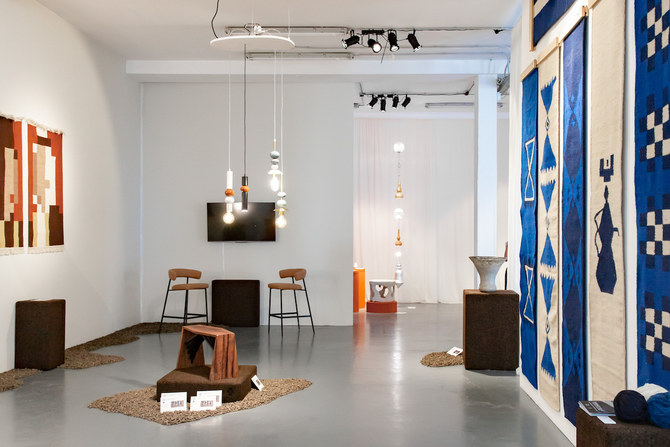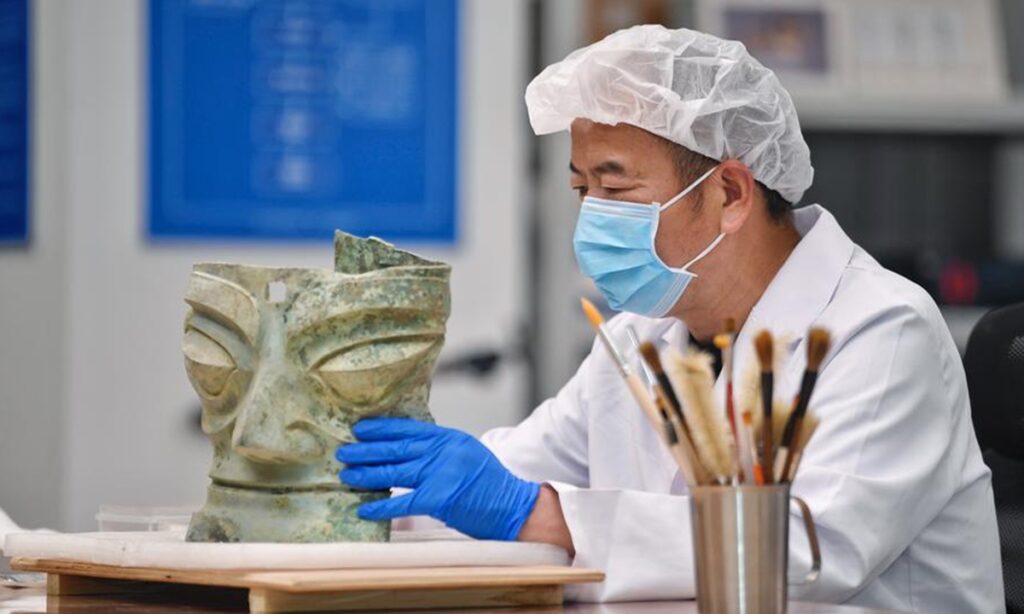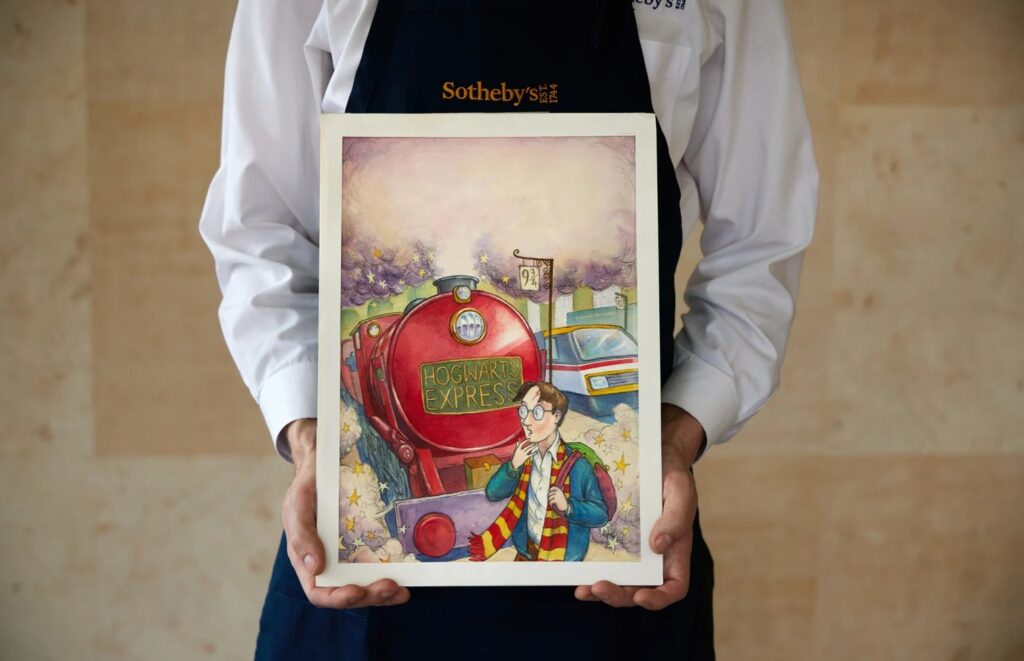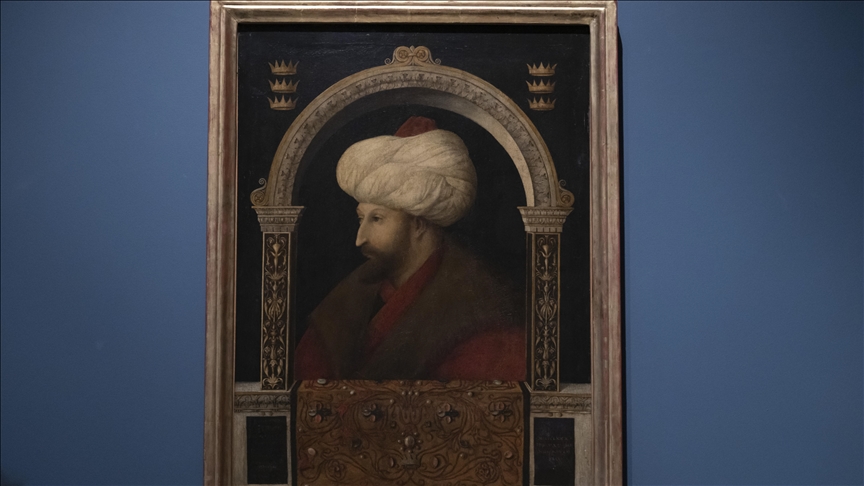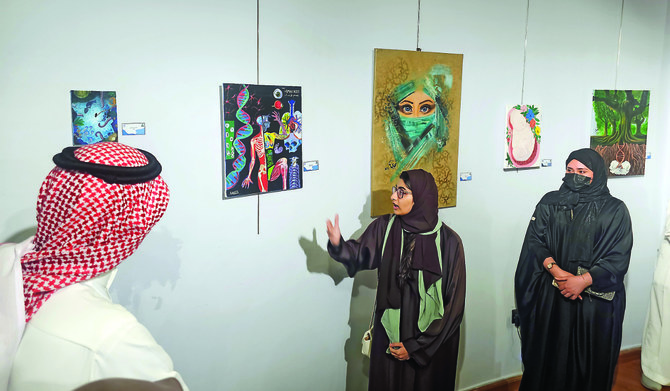
Melissa Gronlund
The title of Adriano Pedroso’s new exhibition at the Venice Biennale, Foreigners Everywhere, is not the rebuke that it may seem from afar. Rather, the show highlights art that was overlooked during the past century and celebrates the multiculturalism of the Global South.
Containing contributions from more than 100 artists, the exhibition captures the joy and political grit of the work produced by otherwise marginalised artists while the rest of the art world was looking down the barrel of the gallery sale or keeping their eyes fixed on a Western canon.
The first section, the “contemporary nucleus”, is displayed in the Arsenale, the former arms storehouse for the former Venice Republic. A second section, the “nucleus of stories”, sits in the International Pavilion of the Giardini, the gardens where the Biennale’s national pavilions are arrayed.
Roughly, these two sections fall into contemporary and modernist works categories, but the Brazilian curator Pedroso overlaps historical and contemporary throughout the show while also weaving across vastly different geographies.
Textiles are a key medium, particularly in the Arsenale. Long considered less impressive than oil painting – the preserve of women or folk traditions – work in embroidery, weaving and quilting is reclaimed here via historical practices such as that of Filipino artist Pacita Abad, the artist Claudia Alarcon from the Wichi people of northern Argentina (here working with the collective Silat), or the women who made embroidered arpilleras under Pinochet in Chile.
Pedroso also underlines its potency as a contemporary medium, as in Dana Awartani’s stunning Come, let me heal your wounds. Let me mend your broken bones, as we stand here mourning (2024). Arranged as floating blocks of dyed silk, it maps instances of destruction of cultural sites across the Arab world, signalled by small tears in the fabric that the Saudi-Palestinian artist makes and then darns. The project was first developed for Al Burda festival in Abu Dhabi in 2019, and grows with each exhibition, with the latest tears reflecting the war in Gaza.
It is a connection to war, and art’s role as testimony, that runs throughout both shows, giving a sense of art’s urgency and vital necessity as a cultural medium.

Global modernisms
In the Giardini, two extraordinary, salon-style presentations display masterworks from global modernism: one devoted to abstraction and one devoted to portraits, from Latin America, the Middle East, and Asia.
“I feel like I can breathe,” says Sultan Sooud Al Qassemi at the preview. “It is such a relief to see work from the region without having to see it next to European paintings.”
Al Qassemi’s Barjeel Art Foundation, based in Sharjah, lent work to the show, alongside other regional entities such as Mathaf in Doha, the Dalloul Art Foundation in Lebanon, and the collection of Taimur Hassan. They were all first-time loaners, reflecting the importance of properly collecting the region’s art history.
Pedroso used these rooms to make new connections. Latin American abstraction and that of artists in the Middle East were both extraordinarily rich, exciting periods – with a flair for colour that largely surpassed Western painting.
This show brought out the potential for these correspondences to be studied more fully. A work of waves by Mohamed Melehi, for example, was paired with a painting of similar bands of colour by the Argentine artist Maria Martorell, both made in 1968.
The Dominican artist Freddy Rodriguez, who died in 2003, was making abstractions based on the landscape in much the same way that Samia Halaby uses her work to recall the Palestinian land of her childhood (Halaby was represented here by one of her great cross paintings).

The rooms were beautiful but they also run the risk of flattening out the work into mere visual patterns. The exhibition works hard to provide context, with short texts commissioned by scholars and writers who know what they are talking about, such as (from a Middle East perspective) Jessica Gerschultz, Rasha Salti and Saira Ansari. But the salon-style presentation of artworks displayed up and down the walls slightly inhibits individual works from speaking on their own terms.
The juxtaposition of different contexts works best in the diciest part of Pedroso’s thesis: the idea of foreigners everywhere. The title, which derives from a work by the French collective Claire Fontaine, has been taken to task because of its apparent nod to nativist rhetoric – though Pedroso clarifies that “foreigners” is meant to be read expansively, for instance to also include those who feel foreign in their own bodies or in their own minds.
People are at the heart of art-making and migration is at the heart of foreignness, he explains. This is underlined by the panoply of subjects in the installation of modernist portraiture. A number of paintings shows black figures in different regions; such as works by the South African artist George Pemba; the Nigerian Uche Okeke; the Brazilian artist Candio Portinari; and the Jamaican artists Barrington Watson and Osmond Watson. They operate as a document of the geographical breadth of the African diaspora – with its cause (slavery) hanging unsaid in the room.

Institutional amnesia
Despite its deliberate focus on historical practices, Foreigners Everywhere is ironically being treated as a departure from standard modes of curating. Pedroso, for example, has been noted as the first South American to curate at the biennial, and the first “who has been born and raised in the Global South”.
The parsing is telling – because Pedroso is not the first curator from the Global South to put together the biennial, nor is he the first curator to deliberately bring in artists from marginalised identities. With the exception of the 2017 and 2019 editions, expanding art’s geographies has been the express leitmotif of the Biennale since Massimiliano Giani’s presentation in 2013.
The art world’s lack of institutional memory is significant. In part, it shows its need for novelty, but more importantly it acknowledges the compromised nature of the project: even though the players in the exhibition might change, the structure of the art world remains Western-dominated, with power and financial clout still in New York, London, Paris, and Berlin. The idea that “foreigners everywhere” is a new idea simply reflects that fact that the exhibition format is so steeped in Western modes of thinking that the inclusion of outlier artists still feels jarring to those who maintain them.
What is wonderful about the exhibition, though, is that many artworks do not really seem to care about their place in the Western art world. There were fewer dealers at the fair, fewer power brokers making a sale. Works like Rosa Elena Currurich’s from Guatemala, Aycoobo’s from Colombia, and the Aravani Art Project from Bangalore document political struggles closer to home or demonstrate different modes of belief and art practice.
They are a crucial reminder that art’s job – especially in the Global South – has so often been to resist official histories and to give voice to alternative realities. Rather than the similarities between these works being flattened out, the work of Foreigners Everywhere feels united in solidarity.
Courtesy: thenationalnews




